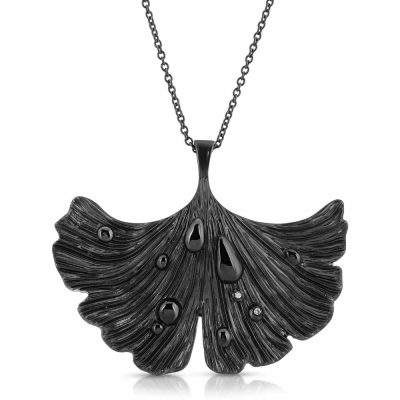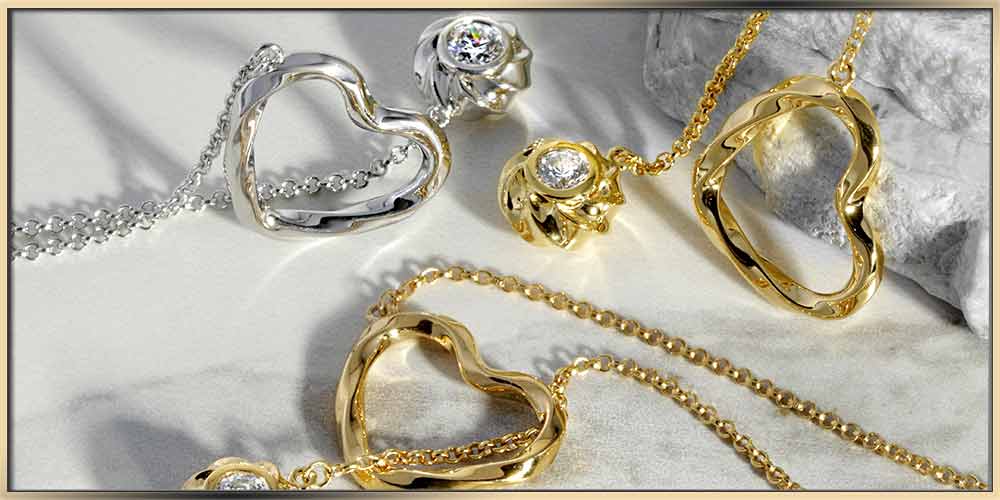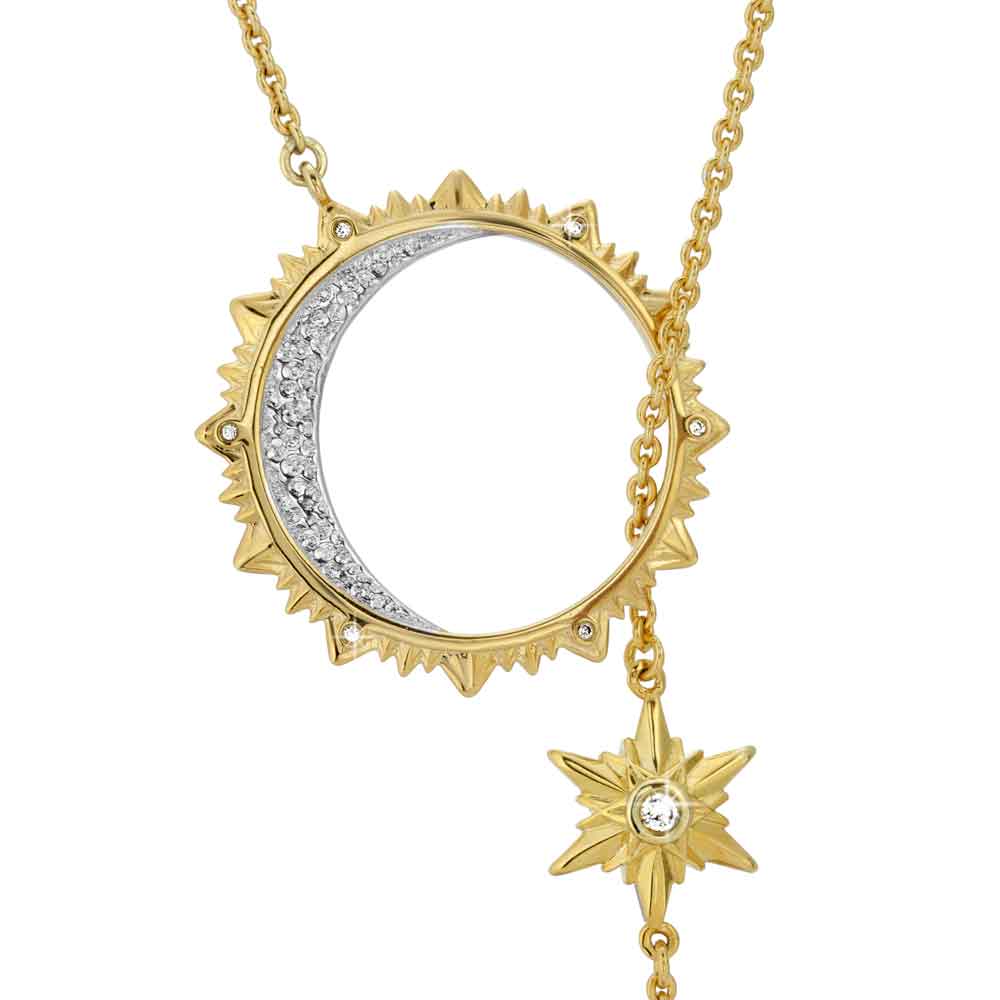Fun Reading, Tips & Recommendations
Gold and Rhodium Plated Jewelry
It would be hard to find a woman who doesn’t adore the elegance of jewelry made from precious materials. Metals such as silver, gold, platinum and rhodium are striking and look absolutely stunning with any outfit. These rare metals will never go out of style. And now, plated jewelry is taking center stage.
Gold and silver are very soft and rhodium is very brittle. This is why these materials have to be melted into stronger alloys before being made into jewelry. However, plated jewelry is an excellent way to address these textural problems.
Rather than creating the whole piece of jewelry out of an alloy, plated jewelry is made of a strong base material. This base material is then plated with a very tiny layer of precious gold, silver or rhodium. Plated jewelry is an option which is strong and more affordable than solid pieces, but is still stunning and of very high quality.
But what is plated jewelry made out of? And is it the right option for you?
What Is Plated Jewelry?
Plated jewelry are pieces made from a strong and durable base material, such as brass, copper or sterling silver. These materials are usually quite common, which also helps keep the pieces at a reasonable price point.
However, plated jewelry is still high quality and looks just as great as solid pieces. This is because the base material is coated in a thin layer of precious metal like gold, silver or rhodium. This is done through a special and careful process.
First, the piece must be thoroughly cleaned and then rinsed to make sure that it’s free of any cleaning products. One or more base layers of metal are often applied over the base. For instance, a copper piece may be layered with several layers of nickel before the final plated layer. This is because copper can be known to atomically migrate, so the nickel provides a protective layer to stop the copper having an unwanted effect on the plating metal.
The piece is then placed on a special pole that is charged with negative electric energy. When the pole is submerged into the plating solution, the positively charged ions rush toward the piece. They evenly cover the piece in the gorgeous plating. Because gemstones and diamonds can’t conduct electric charge, they are entirely untouched by the plating.
Finally, the piece is carefully rinsed and dried. For many pieces, they will only get one layer of plating. However, the process can be repeated many times to thicken the precious outside layer. Once it has the correct number of layers, it is dried a final time and ready for wear.
Gold Plated Jewelry
Gold has a long history of value and wear. The ancient Egyptians preferred gold to other metals due to its workability and rarity. It wasn’t long before it became a status symbol. In societies all over the world, gold has remained a timeless jewelry material. In many cultures, gold is thought to ward off black magic and bring prosperity to the wearer. Whether or not you believe that, there’s no denying gold looks classic and gorgeous.
Because it is so soft, almost all gold and gold plated jewelry are alloys. If the piece is 24 karat gold, this means it is pure gold. Although this looks amazing, it is uncommon because it is likely to move out of shape over time. Therefore, some of the 24 karats are replaced with other, stronger, metals such as copper or nickel.
The higher the number of karats that are gold, the more pure the piece is. However, the more karats that are not gold, the more stable the piece will be. This also makes it more affordable. 18 and 14 karat gold platings are popular options. This means that they are 18 and 14 parts gold, respectively. The rest of the 24 karats are made up of other metals.
Gold plating is so thin that it is measured in microns. One micron is one twenty-five thousandth of an inch. Gold plating is usually at least 0.5 microns thick. A layer any thinner than that is flash plating. This is a fairly low quality option as it wears quickly. Although, flash plated jewelry can be great for a one-off event or a costume.
If you’re looking for the highest quality gold plated jewelry, aim for pieces that are at least 1.0 microns thick. Your jeweler should be able to inform you about the thickness of the gold plating and help you make an informed decision about your jewelry purchase.
Rhodium Plated Jewelry
Rhodium is an amazing material to use for plating. It is an element closely related to platinum. It is extremely rare, shines bright, and is almost impossible to tarnish. This is because it’s a “noble” metal. In chemistry terms, this means it’s resistant to both corrosion and oxidation.
Unfortunately, rhodium is too brittle to make into solid jewelry. Plus, it’s so rare that it is around 10 to 25 times more expensive than gold. There wouldn’t be many people with the means to buy pure rhodium jewelry. This is why rhodium is almost entirely used for plating.
Most rhodium plating is .10 to 1.0 microns thick, depending on the piece. And remember, a micron is only one twenty-five thousandth of an inch. However, rhodium is so strong that it needs only the tiniest coating to cover the piece. Even a coating so thin will offer long lasting protection.

However, black rhodium is also an elegant option. This is a very dark gunmetal color, and often has a gothic, noir style. Black rhodium looks just as elegant as classic silver or gold but is a way to make an evening outfit a little more unique. Gorgeous actresses such as Brie Larson and Stacy Keibler have worn black rhodium on the red carpet. This material is quickly picking up traction as a chic jewelry option.
What To Consider Before Buying Plated Jewelry
You should be aware that the plating can, and likely will, wear off over time. If you wear a piece of plated jewelry often, you will find yourself eventually needing to get it re-plated.
How often you need your plated jewelry touched up depends on a few factors such as your body’s chemistry, how often you wear the piece, and how you look after it. It’s best to keep any plated jewelry dry, so make sure to remove it before swimming or bathing. Expect to get the plating touched up every few years.
However, if you look after your plated jewelry and choose pieces made by reputable jewelers, it is a great option. It looks just as good as any solid piece, but it will be more affordable and is likely to maintain its shape longer. Next time you’re shopping for jewelry, ask about their plated jewelry options. Check out ARY D’PO for a great variety of high quality gold and rhodium plated jewelry.


